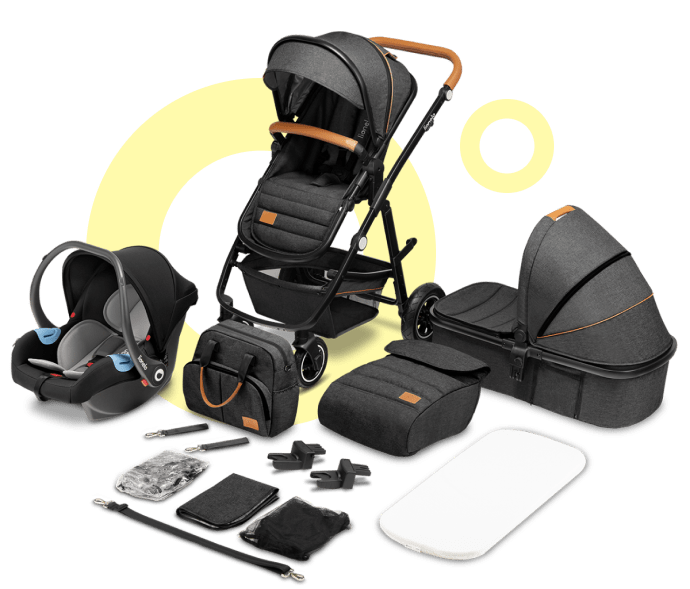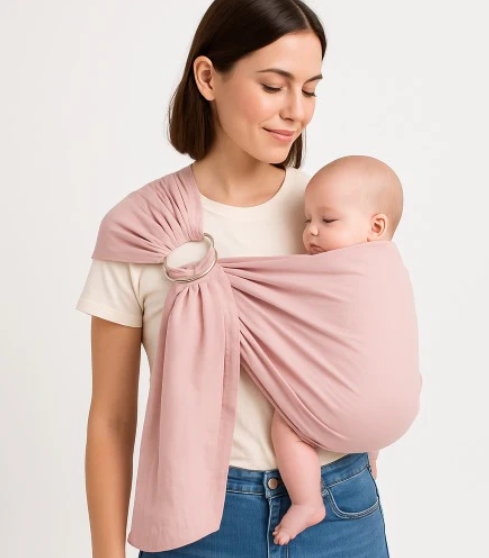Food packaging plays a pivotal role in the food industry, not only serving as a protective layer for food but also as a key marketing tool. The visual appeal of food products is paramount in attracting consumers, and one of the most effective ways to achieve this is through innovative and carefully designed food packaging boxes. The packaging is the first point of contact between the product and the consumer, and it has the power to communicate a brand’s identity, values, and quality.
The Role of Food Packaging Boxes in Food Marketing
The visual appeal of a food product is often directly linked to its packaging. Food packaging boxes do more than just encase the product; they help to tell the product’s story and build an emotional connection with consumers. In a competitive marketplace, where countless brands vie for consumer attention, the packaging can be the deciding factor between a purchase and a pass.
First Impressions Matter
When consumers approach a product on a supermarket shelf or in an online store, the packaging is what draws their attention first. Eye-catching packaging can create curiosity and compel consumers to pick up the product. This is particularly true for food products, where customers often rely on packaging to convey the quality, taste, and brand ethos of the food inside. A well-designed food packaging box can immediately communicate freshness, health, and premium quality, which are attributes that resonate with modern consumers.
Packaging as a Branding Tool
Food packaging boxes also serve as an extension of a brand’s identity. The choice of colors, design elements, logo, and typography can help create a strong brand image and make a food product instantly recognizable. Consistent and well-thought-out packaging design reinforces brand loyalty, as consumers tend to gravitate toward products they identify with or trust. Moreover, food packaging can reflect the values of a brand, whether it’s sustainability, luxury, or affordability.
Key Elements in Designing Food Packaging Boxes for Visual Appeal
Several factors contribute to making food packaging visually appealing. These elements not only attract attention but also influence consumer perception of the product’s quality. Below, we explore the most important components of food packaging design.
Color Psychology
Colors play a crucial role in influencing consumer behavior and emotional responses. The psychology of color is widely studied in marketing and design because it affects mood, perception, and even decision-making. When designing food packaging boxes, color choices should align with the nature of the product and the target market.
- Red: Often associated with excitement, energy, and appetite stimulation, red is a common color for fast food and snack products.
- Green: Symbolizing freshness, health, and nature, green is frequently used for organic, vegan, or health-conscious food products.
- Blue: A calming and trustworthy color, blue is often used in packaging for beverages, dairy, and high-quality food items.
- Yellow: A cheerful and attention-grabbing color, yellow is often used to create a feeling of happiness, which works well for kid-friendly snacks and treats.
- Brown: Brown evokes an earthy, natural feeling and is often used for products that emphasize organic or rustic qualities.
By carefully selecting colors that align with the product’s message and brand identity, food packaging can be optimized to appeal to the target audience while enhancing the overall visual impact.
Material Selection
The material of the food packaging box is just as important as its design. Materials influence not only the look of the product but also its sustainability and functionality. Choosing eco-friendly and high-quality materials can enhance the product’s perceived value and resonate with environmentally conscious consumers.
- Cardboard and Paperboard: These materials are versatile, cost-effective, and commonly used for food packaging. They provide ample space for intricate designs, and their natural appearance is ideal for organic or artisanal food products.
- Plastic: While plastic is often associated with convenience, it can be molded into various shapes and sizes, which makes it a popular choice for many food items. However, it is important to use biodegradable or recyclable plastics to align with sustainability goals.
- Glass: Glass packaging is often perceived as premium and luxurious. It is commonly used for high-end food products such as sauces, preserves, and beverages.
The right material can contribute to the visual appeal by enhancing the overall aesthetic of the packaging and ensuring the food inside remains fresh and safe for consumption.
Typography and Branding
Typography is another critical component of food packaging boxes. The font style, size, and arrangement can create a visual hierarchy that guides the consumer’s attention. The text on the packaging should be legible and reflect the tone of the brand. For instance, a clean and modern sans-serif font may work well for a premium product, while a playful, handwritten font may be appropriate for children’s snacks.
In addition to the font, the brand logo is an essential part of the packaging design. A well-placed and recognizable logo helps reinforce brand identity and makes it easier for customers to locate the product among competitors.
Imagery and Graphics
Images and graphics are some of the most effective ways to enhance the visual appeal of food packaging. High-quality photos of the food itself or illustrations that reflect the product’s ingredients and flavor can create an appetizing and tempting visual. For example, a package for a chocolate bar might feature an image of a rich, glossy chocolate piece, while a box for a fresh salad might showcase vibrant, crisp vegetables.
Graphics that represent the food’s origin, flavor, or texture can also be powerful in conveying quality and freshness. Custom illustrations, patterns, and icons can further add to the uniqueness of the packaging design.
Packaging Shape and Structure
The shape and structure of the packaging box play an important role in its appeal. A unique and innovative package can capture attention by standing out from the competition. For instance, food packaging that uses unconventional shapes or folding techniques adds a tactile element to the design, enticing consumers to interact with the product.
Innovative packaging shapes can also increase functionality. For example, easy-to-open boxes with resealable features are convenient for consumers, while also showcasing a well-thought-out design that enhances the user experience.
The Impact of Food Packaging on Consumer Behavior
Packaging influences not only the initial purchase decision but also the consumer’s ongoing relationship with a brand. When consumers are presented with visually appealing packaging, they are more likely to view the product as higher quality, even if the actual content is similar to other products on the market. Additionally, a well-designed food packaging box can inspire feelings of trust, leading to repeat purchases.
Moreover, the design of food packaging boxes can serve as a storytelling medium, sharing the product’s journey, ingredients, or sustainability practices. By connecting with consumers on an emotional level, brands can foster loyalty and advocacy, ultimately driving sales and long-term success.
Sustainability and Eco-Friendly Packaging in Food
In recent years, there has been a growing demand for sustainable and eco-friendly food packaging. Consumers are becoming increasingly aware of environmental issues and are actively seeking out brands that prioritize sustainability. Food packaging boxes made from recyclable, biodegradable, or compostable materials help reduce the environmental footprint while maintaining aesthetic appeal.
Brands that embrace eco-friendly packaging are not only benefiting the planet but also appealing to a demographic that values sustainability. Packaging can be both visually attractive and environmentally responsible, which is becoming a crucial consideration for food brands looking to differentiate themselves in a competitive market.
Conclusion
Food packaging boxes are more than just containers; they are powerful marketing tools that can significantly enhance the visual appeal of food products. By carefully considering elements like color, material, typography, and imagery, food packaging can elevate a product’s perceived quality and create an emotional connection with consumers. In an increasingly competitive market, the role of food packaging in attracting and retaining customers cannot be overstated. As the demand for sustainable packaging continues to rise, food brands will need to balance aesthetics with environmental responsibility to meet the expectations of modern consumers.
FAQs on Food Packaging Boxes
Why is the design of food packaging important?
Food packaging design is crucial as it directly influences consumer perception, brand recognition, and purchase decisions. It also serves as a communication tool to convey the product’s quality and appeal.
How can color influence consumer decisions in food packaging?
Colors evoke emotions and associations. For example, red stimulates appetite, while green conveys health and freshness. The right color can make a product more attractive and appealing to the target market.
What types of materials are best for food packaging boxes?
Materials such as cardboard, paperboard, plastic, and glass are commonly used for food packaging. The choice depends on the product’s needs, brand positioning, and sustainability goals.
Can typography affect the visual appeal of food packaging?
Yes, typography plays a significant role in packaging design. It helps establish a brand’s tone and style, and contributes to readability and visual hierarchy.
What role do images and graphics play in food packaging design?
High-quality images and graphics can make the product more tempting and visually appealing, helping to communicate the food’s flavor, texture, and quality.
How does the shape of the packaging influence consumer appeal?
Unique and innovative packaging shapes stand out and attract attention. They can also offer practical advantages, such as ease of use or storage.
What impact does food packaging have on consumer behavior?
Attractive packaging increases the likelihood of a purchase and can influence perceptions of product quality. It also contributes to brand loyalty and
repeat purchases.
How does sustainable packaging affect food product appeal?
Sustainable packaging is becoming increasingly important to consumers who value eco-friendly practices. Brands that use recyclable or biodegradable materials may appeal to a more environmentally conscious audience.
What are some examples of creative food packaging designs?
Examples include innovative folding techniques, eco-friendly designs, and packaging that incorporates interactive elements such as QR codes or special textures.
Can food packaging help a brand tell its story?
Yes, packaging can be used to communicate a brand’s values, such as sustainability or authenticity, through visuals and messaging.
How can food packaging enhance the luxury appeal of a product?
Premium packaging materials, elegant typography, and sophisticated color schemes can create a sense of luxury and exclusivity.
Is there a trend toward minimalistic food packaging?
Yes, many brands are embracing minimalist packaging designs that emphasize simplicity, clean lines, and a focus on the product itself.
What is the importance of packaging in the online food industry?
Packaging ensures that food products are delivered safely and attractively. It also serves as a key factor in online brand recognition and consumer trust.
How can packaging design influence perceptions of healthiness?
Colors like green and blue, along with clean, natural imagery, can convey health and wellness, helping consumers associate the product with quality and nutrition.
What challenges do designers face in food packaging?
Designers must balance aesthetics with functionality, ensuring that the packaging protects the food while also attracting consumers and aligning with sustainability goals.
How can food packaging be made more eco-friendly?
By using recyclable, biodegradable, or compostable materials, reducing excess packaging, and minimizing the carbon footprint of production processes.
How do cultural factors affect food packaging design?
Different cultures have unique associations with colors, symbols, and images, so packaging designs must be tailored to the preferences and expectations of the target market.
Can food packaging design influence customer loyalty?
Yes, well-designed packaging can build emotional connections with consumers, encouraging repeat purchases and fostering brand loyalty.
What are the benefits of using transparent packaging for food products?
Transparent packaging allows consumers to see the product inside, which can enhance the perceived freshness and quality of the food.
How does food packaging affect product shelf life?
Packaging plays a crucial role in preserving the quality and freshness of food, providing protection from environmental factors such as moisture, light, and air.



